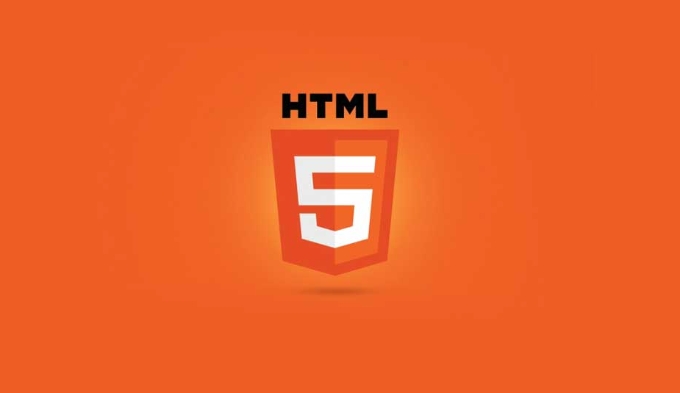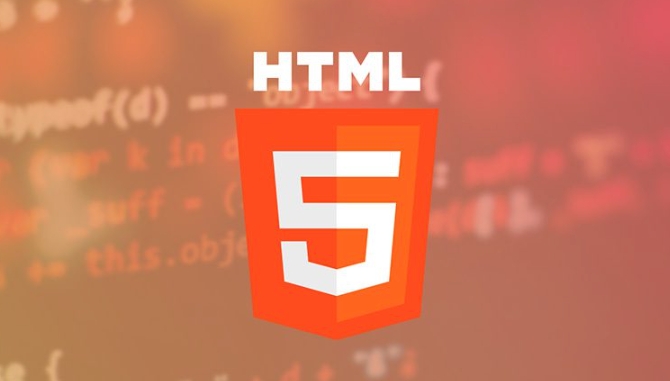WebSocket is a full-duplex communication protocol provided by HTML5, suitable for real-time interactive scenarios. 1. The client establishes a connection through new WebSocket(url) and listens to events such as onopen and onmessage, and uses send() to send data; 2. The server can be built with the WS library of Node.js to listen to connections and message events and handles them; 3. When using it, pay attention to cross-domain issues, connection preservation, message format uniformity and security. It is recommended that the client implement an automatic reconnection mechanism. Mastering these key points can build powerful real-time communication applications.

WebSocket is a very practical feature in HTML5 that allows the establishment of a persistent, full-duplex communication channel between the client and the server. Compared with the traditional HTTP request-response mode, WebSocket is more suitable for scenarios that require real-time interaction, such as chat applications, online games, real-time data push, etc.

If you are looking for a simple and easy-to-understand example of WebSocket client and server, the following content should be helpful.

How to use WebSocket Client in a Browser
WebSocket's client API is concise and clear, and only a few lines of code can connect to the server and send and receive messages.
const socket = new WebSocket('ws://localhost:8080');
socket.addEventListener('open', function (event) {
socket.send('Hello Server!');
});
socket.addEventListener('message', function (event) {
console.log('Received message:', event.data);
});-
new WebSocket(url): Create a connection, note that the protocol isws://(non-encrypted) orwss://(encrypted). -
onopen: Triggered after the connection is established, and an initialization message can be sent at this time. -
onmessage: Used to receive messages sent by the server. -
send(): Send data to the server, the parameters can be string, Blob, or ArrayBuffer.
You can also listen for errors and close events:

-
onerror: Execute when an error occurs. -
onclose: Executes when the connection is disconnected.
How to build a simple WebSocket server (Node.js)
On the server side, you can use Node.js to pair ws , a popular library to quickly implement WebSocket services.
First install the dependencies:
npm install ws
Then write a basic server code:
const WebSocket = require('ws');
const wss = new WebSocket.Server({ port: 8080 });
wss.on('connection', function connection(ws) {
console.log('Client connected');
ws.on('message', function incoming(message) {
console.log('received:', message);
ws.send(`server response: ${message}`);
});
ws.send('Welcome to connect to the WebSocket server');
});This example does a few things:
- Created a WebSocket server that listens to port 8080.
- Print a log when there is a client connection and send a welcome message.
- Receives the client's message and returns a prefixed response as is.
You can expand this logic according to business needs, such as broadcasting messages to all connected clients, processing JSON data, adding authentication, etc.
Frequently Asked Questions and Precautions
Although WebSocket is powerful, there are some things to pay attention to in actual use:
- Cross-domain problem : WebSocket is also restricted by the same-origin policy. If the front-end and back-end are not under the same domain name, the server needs to set the appropriate CORS header or resolve it through a proxy.
- Connection keeping and reconnection mechanism : WebSocket may be disconnected due to network fluctuations and other reasons. It is recommended that the client add automatic reconnection logic.
- Unified message format : It is recommended that the front and back end agree on good message formats, such as uniformly using JSON format for easy parsing and processing.
- Security considerations : The production environment should use the encrypted
wss://protocol and combine it with an authentication mechanism to prevent abuse.
For example, the idea of ??automatic reconnection of the client can be written like this:
let socket;
function connect() {
socket = new WebSocket('ws://localhost:8080');
socket.onclose = () => {
setTimeout(connect, 3000); // Try to reconnect 3 seconds after disconnection};
}
connect();Basically that's it. The basic usage of WebSocket is actually not complicated, but it is easy to ignore details, such as exception handling, message format, connection status management, etc. As long as you master these points, you can build a powerful real-time communication application.
The above is the detailed content of HTML5 websocket client and server examples. For more information, please follow other related articles on the PHP Chinese website!

Hot AI Tools

Undress AI Tool
Undress images for free

Undresser.AI Undress
AI-powered app for creating realistic nude photos

AI Clothes Remover
Online AI tool for removing clothes from photos.

Clothoff.io
AI clothes remover

Video Face Swap
Swap faces in any video effortlessly with our completely free AI face swap tool!

Hot Article

Hot Tools

Notepad++7.3.1
Easy-to-use and free code editor

SublimeText3 Chinese version
Chinese version, very easy to use

Zend Studio 13.0.1
Powerful PHP integrated development environment

Dreamweaver CS6
Visual web development tools

SublimeText3 Mac version
God-level code editing software (SublimeText3)

Hot Topics
 Audio and Video: HTML5 VS Youtube Embedding
Jun 19, 2025 am 12:51 AM
Audio and Video: HTML5 VS Youtube Embedding
Jun 19, 2025 am 12:51 AM
HTML5isbetterforcontrolandcustomization,whileYouTubeisbetterforeaseandperformance.1)HTML5allowsfortailoreduserexperiencesbutrequiresmanagingcodecsandcompatibility.2)YouTubeofferssimpleembeddingwithoptimizedperformancebutlimitscontroloverappearanceand
 What is the purpose of the input type='range'?
Jun 23, 2025 am 12:17 AM
What is the purpose of the input type='range'?
Jun 23, 2025 am 12:17 AM
inputtype="range" is used to create a slider control, allowing the user to select a value from a predefined range. 1. It is mainly suitable for scenes where values ??need to be selected intuitively, such as adjusting volume, brightness or scoring systems; 2. The basic structure includes min, max and step attributes, which set the minimum value, maximum value and step size respectively; 3. This value can be obtained and used in real time through JavaScript to improve the interactive experience; 4. It is recommended to display the current value and pay attention to accessibility and browser compatibility issues when using it.
 Adding drag and drop functionality using the HTML5 Drag and Drop API.
Jul 05, 2025 am 02:43 AM
Adding drag and drop functionality using the HTML5 Drag and Drop API.
Jul 05, 2025 am 02:43 AM
The way to add drag and drop functionality to a web page is to use HTML5's DragandDrop API, which is natively supported without additional libraries. The specific steps are as follows: 1. Set the element draggable="true" to enable drag; 2. Listen to dragstart, dragover, drop and dragend events; 3. Set data in dragstart, block default behavior in dragover, and handle logic in drop. In addition, element movement can be achieved through appendChild and file upload can be achieved through e.dataTransfer.files. Note: preventDefault must be called
 How can you animate an SVG with CSS?
Jun 30, 2025 am 02:06 AM
How can you animate an SVG with CSS?
Jun 30, 2025 am 02:06 AM
AnimatingSVGwithCSSispossibleusingkeyframesforbasicanimationsandtransitionsforinteractiveeffects.1.Use@keyframestodefineanimationstagesforpropertieslikescale,opacity,andcolor.2.ApplytheanimationtoSVGelementssuchas,,orviaCSSclasses.3.Forhoverorstate-b
 HTML audio and video: Examples
Jun 19, 2025 am 12:54 AM
HTML audio and video: Examples
Jun 19, 2025 am 12:54 AM
Audio and video elements in HTML can improve the dynamics and user experience of web pages. 1. Embed audio files using elements and realize automatic and loop playback of background music through autoplay and loop properties. 2. Use elements to embed video files, set width and height and controls properties, and provide multiple formats to ensure browser compatibility.
 What is WebRTC and what are its main use cases?
Jun 24, 2025 am 12:47 AM
What is WebRTC and what are its main use cases?
Jun 24, 2025 am 12:47 AM
WebRTC is a free, open source technology that supports real-time communication between browsers and devices. It realizes audio and video capture, encoding and point-to-point transmission through built-in API, without plug-ins. Its working principle includes: 1. The browser captures audio and video input; 2. The data is encoded and transmitted directly to another browser through a security protocol; 3. The signaling server assists in the initial connection but does not participate in media transmission; 4. The connection is established to achieve low-latency direct communication. The main application scenarios are: 1. Video conferencing (such as GoogleMeet, Jitsi); 2. Customer service voice/video chat; 3. Online games and collaborative applications; 4. IoT and real-time monitoring. Its advantages are cross-platform compatibility, no download required, default encryption and low latency, suitable for point-to-point communication
 How to create animations on a canvas using requestAnimationFrame()?
Jun 22, 2025 am 12:52 AM
How to create animations on a canvas using requestAnimationFrame()?
Jun 22, 2025 am 12:52 AM
The key to using requestAnimationFrame() to achieve smooth animation on HTMLCanvas is to understand its operating mechanism and cooperate with Canvas' drawing process. 1. requestAnimationFrame() is an API designed for animation by the browser. It can be synchronized with the screen refresh rate, avoid lag or tear, and is more efficient than setTimeout or setInterval; 2. The animation infrastructure includes preparing canvas elements, obtaining context, and defining the main loop function animate(), where the canvas is cleared and the next frame is requested for continuous redrawing; 3. To achieve dynamic effects, state variables, such as the coordinates of small balls, are updated in each frame, thereby forming
 How to check if a browser can play a specific video format?
Jun 28, 2025 am 02:06 AM
How to check if a browser can play a specific video format?
Jun 28, 2025 am 02:06 AM
To confirm whether the browser can play a specific video format, you can follow the following steps: 1. Check the browser's official documents or CanIuse website to understand the supported formats, such as Chrome supports MP4, WebM, etc., Safari mainly supports MP4; 2. Use HTML5 tag local test to load the video file to see if it can play normally; 3. Upload files with online tools such as VideoJSTechInsights or BrowserStackLive for cross-platform detection. When testing, you need to pay attention to the impact of the encoded version, and you cannot rely solely on the file suffix name to judge compatibility.






